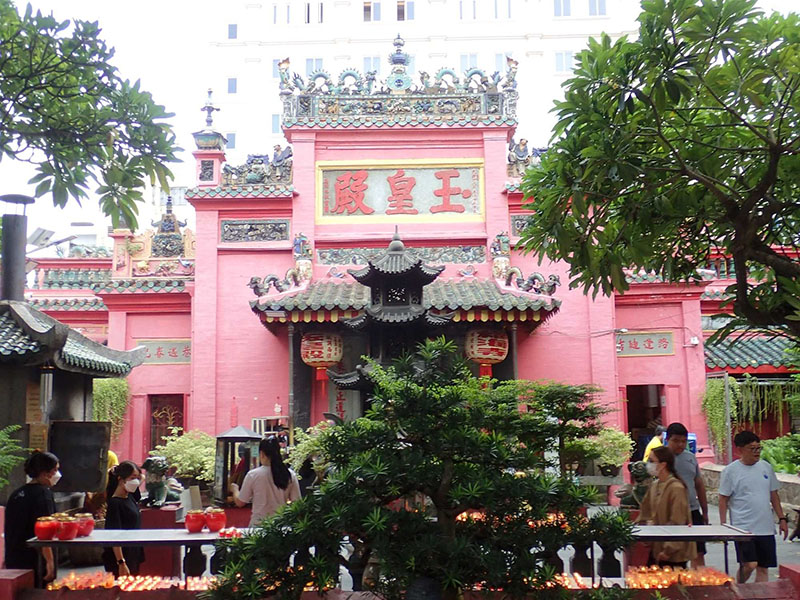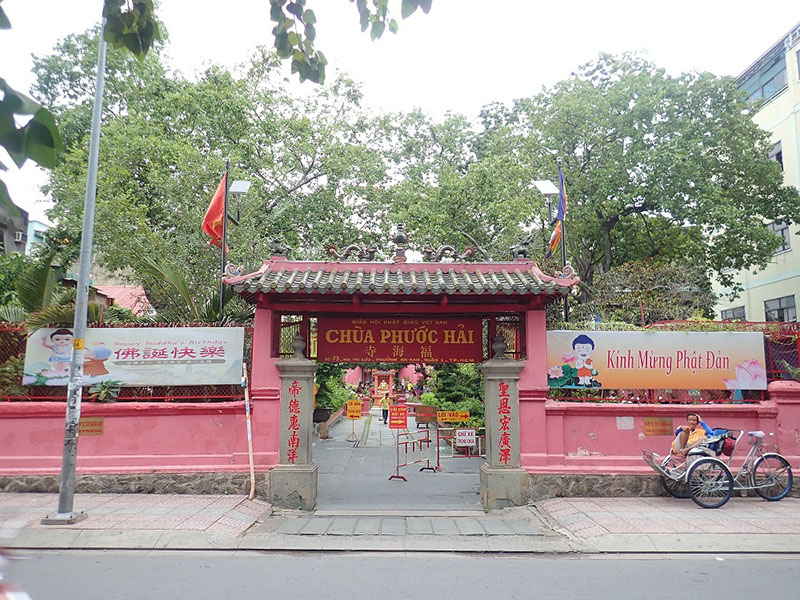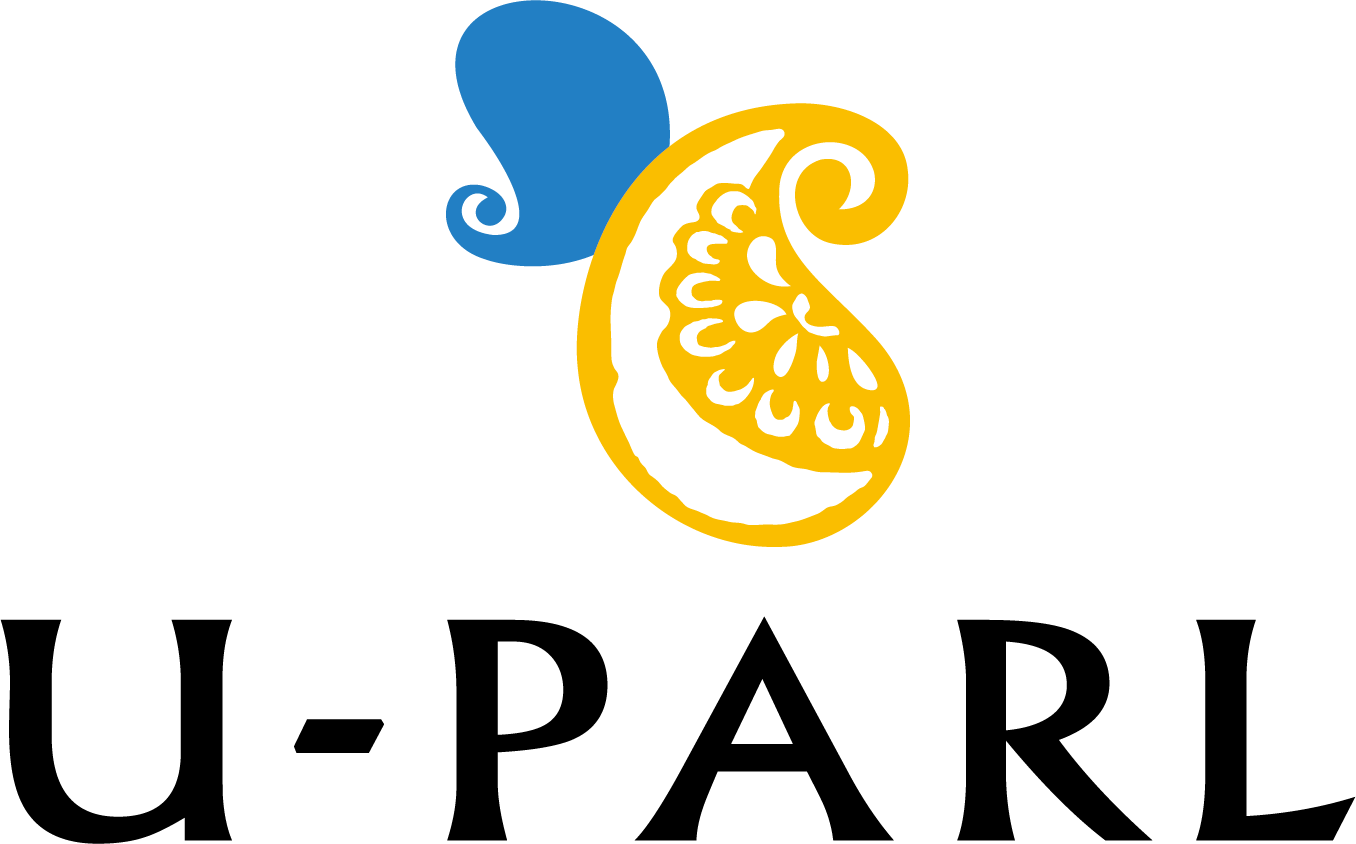SHIBUYA Yuki
The Ngoc-Hoang Pagoda (also known as Jade Emperor Pagoda) that became the subject of La Pagode de Dakao (Lelièvre and Clouqueur 1914) is a religious facility that was constructed by Chinese immigrants during the French colonial rule period in Saigon, the capital city of the Cochin China colony of the time(1). Numerous religious facilities built during the traditional dynastic period, such as Giac Lam Buddhist temple (Chùa Giác Lâm), Giac Vien Buddhist temple (Chùa Giác Viên), and the Thien Hau Temple (Hội quán Tuệ Thành) devoted to Mazu (a Chinese sea goddess“Empress of Heaven”), which also functions as the Cantonese community’s mausoleum and cultural center, are still extant today in Saigon (central area of present-day Ho Chi Minh City) and its neighboring Chinatown of Cholon. Although the Ngoc-Hoang Pagoda is of rather recent origin as compared to these religious facilities, its richly decorated, unique and mysterious, interior with various figures of worshiped deities seems to have completely mesmerized the authors of the booklet, Lelièvre and Clouqueur, (Lelièvre and Clouqueur 1914: 5), who particularly alluded to “the gigantic statues, terrible genii, marvelous incense censer, remarkable sculptures.” Once the booklet was published, its reviews appeared in such influential magazines as T’oung Pao, Journal des savants, and Journal Asiatique (Cordier 1915a ; Cordier 1915b ; Vinson 1916), which made the existence of the Ngoc-Hoang Pagoda also known to European Orientalists outside the French Indochinese Union. In relation to the Western World, recently, former US president Barack Obama’s stop by the Ngoc-Hoang Pagoda during his official visit to Vietnam in May 2016 drew a lot of attention (Mạnh Tùng 2016)(2).
While acknowledging that the inscription on the facility name tablet reading “Ngoc-Hoang Pagoda” indicates its being a temple dedicated to the Jade Emperor, the highest deity in the Taoist pantheon, the booklet also dwells on the religious syncretism common to the Chinese migrants in Indochina where Mahāyāna Buddhism, Taoism, and Confucianism are blended and deities are conflated with local ones (Lelièvre and Clouqueur 1914: 5, 11). Also, regarding the origin of the Ngoc-Hoang Pagoda, some researchers adhere to a theory that initially it used to be a shrine of the Khmers (Vương Hồng Sển 1950: 101), while others point out a connection with Minh Chon Dao, a folk religion originating in South China (黃 2022; Vương Hồng Sển 1950: 101). The Ngoc-Hoang Pagoda, a religious facility that from its very establishment used to embody a typical example of religious syncretism, in 1982 was taken over by Thích Vĩnh Khương, a Buddhist monk of Cantonese origin, and in 1984, was renamed Phuoc Hai Buddhist Temple (Phước Hải Tự) and, as a Buddhist temple, brought under the auspices of the Vietnam Buddhist Sangha (Giáo hội Phật giáo Việt Nam), an organization comprising the Vietnamese Fatherland Front (Chùa Phật học Xá Lợi n.d.; Nguyễn Đông Triều 2016: 46). However, when, ten years later in 1994, it was designated as an Artistic and Architecture Site of National Significance (Di tích kiến trúc nghệ thuật), the name chosen for the site was “Ngoc-Hoang Pagoda” (Điện Ngọc Hoàng) (Phòng Di sản văn hoá 2022). Thus, even officially, the status of the Pagoda of Dakao keeps swaying between the shrine and temple.

(1) Various theories exist regarding the years when the construction was started and completed (Nguyễn Đông Triều 2016: 45-46).
(2) According to Prof. Dương Ngọc Dũng, who served as a guide to former US President Barack Obama in Vietnam, the reasons why the Ngoc-Hoang Pagoda was chosen were the easiness of providing security as well as personal relationships with the US side (Hà Hương 2016).

〔参考文献〕
Chùa Phật học Xá Lợi. n.d. “Nhân vật Phật giáo Việt Nam – Vần Khu: Khu.” Accessed August 28, 2023. https://chuaxaloi.vn/thong-tin/nhan-vat-phat-giao-viet-nam-van-khu/2117.html.
Cordier, Henri. 1915a. Review of Pagode De Dakao, by A.-E. Lelièvre and Ch.-A. Clouqueur. “T’oung Pao 16 (1): 564.
———. 1915b. Review of Pagode De Dakao, by A.-E. Lelièvre and Ch.-A. Clouqueur. Journal des savants 13ᵉ année (Novembre): 526-527.
Hà Hương. 2016. “Người hướng dẫn ông Obama ở chùa Ngọc Hoàng kể gì?” Báo điện tử Pháp Luật thành phố Hồ Chí Minh, Mai 29, 2016. Accessed August 28, 2023. https://plo.vn/nguoi-huong-dan-ong-obama-o-chua-ngoc-hoang-ke-gi-post390946.html.
Lelièvre, A.-E., and Ch.-A. Clouqueur. 1914. Pagode de Dakao. Saigon: C. Ardin.
Mạnh Tùng. 2016. “Ba tuần chuẩn bị cho 10 phút đón ông Obama ở chùa Ngọc Hoàng.”
Báo điện tử VnExpress, Mai 29, 2016. Accessed August 28, 2023. https://vnexpress.net/ba-tuan-chuan-bi-cho-10-phut-don-ong-obama-o-chua-ngoc-hoang-3410683.html.
Nguyễn Đông Triều. 2016. “Chùa Ngọc Hoàng: Một di tích độc đáo ở thành phố Hồ Chí Minh.” Tạp chí Xưa và Nay 473 (tháng 7 năm 2016): 45-48.
Phòng Di sản văn hoá [Sở Văn hóa và Thể thao Thành phố Hồ Chí Minh]. 2022. “Danh sách các công trình, địa điểm đã được quyết định xếp hạng di tích trên địa bàn Thành phố Hồ Chí Minh (tính đến hết tháng 10 năm 2022).” November 07, 2022. Accessed August 28, 2023. http://svhtt.hochiminhcity.gov.vn/tin-chi-tiet/-/chi-tiet/danh-sach-cac-cong-trinh-%C4%91ia-%C4%91iem-%C4%91a-%C4%91uoc-quyet-%C4%91inh-xep-hang-di-tich-tren-%C4%91ia-ban-thanh-pho-ho-chi-minh-tinh-%C4%91en-het-thang-10-nam-2022–21236-1.html.
Vinson, J. 1916. Review of La Pagode De Dakao, by A.-E. Lelièvre and Ch. Clouqueur. Journal Asiatique 7: 351.
VOV.VN. 2016. “Tổng thống Obama tới thăm chùa Ngọc Hoàng.” Báo Điện tử VOV, Mai 24, 2016. Accessed August 28, 2023. https://vov.vn/chinh-tri/tong-thong-obama-toi-tham-chua-ngoc-hoang-513831.vov.
Vương Hồng Sển. 1950. ‟La Pagode de l’Empereur de Jade à Dakao.” Bulletin de la Société des études indochinoises nouvelle série 25, no.2, 2e trimestre 1950: 97-112.
———. [1968?]. Sài – Gòn năm xưa. xuất bản lần thứ 2. Saigon: Khai Trí.
黃皇南. 2022. 『胡志明市玉皇殿華人信仰型態之研究』(元智大學中國語文學系碩士論文). https://hdl.handle.net/11296/crj999.
*This is an English translation of a Japanese article from the “Catalog of the University of Tokyo Asian Research Library DigitalCollections 2017-2023” published on February 29, 2024.
For more information about the catalog, please click here.
March 25, 2024

